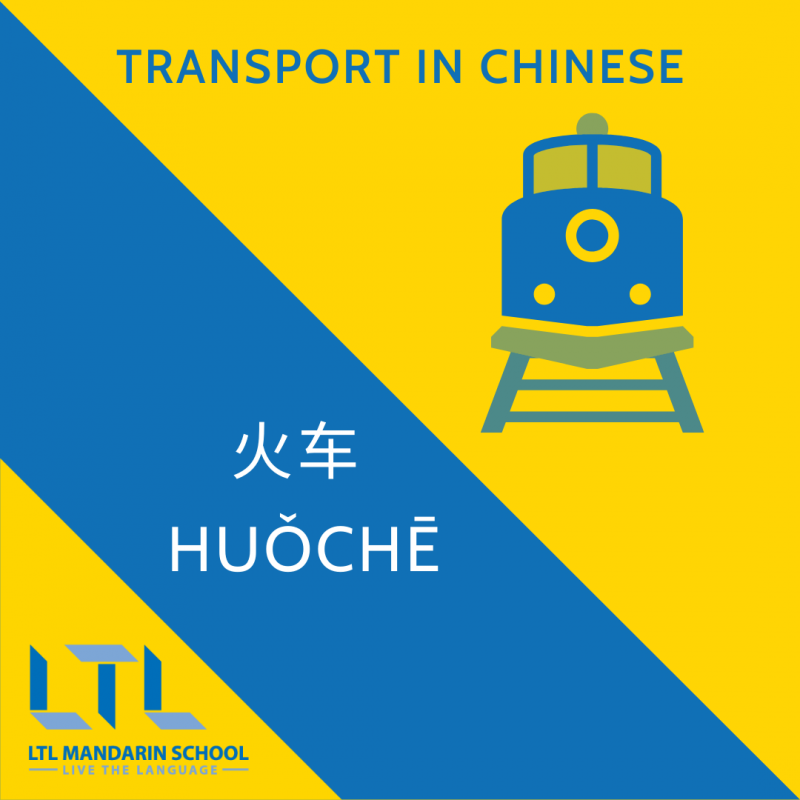How To Travel in China: The 7 Methods To Move
Your Complete Guide on How to Travel in China 🚌 ✈️ 🚖
When coming to China for the first time a common FAQ is – How to Travel in China? What’s the deal?
There are numerous ways to get around China but a lot depends on:
- Where you are
- Your budget
- How “local” your willing to go
- How much Chinese can you speak
All things considered, let’s run down the top 7 ways on how to travel in China.
How to Travel in China #1 – High Speed Rail 高铁 (gāotiě)
How to Travel in China #2 – “Low-Speed” Rail 慢车 (mànchē)
How to Travel in China #3 – Buses 公交车 (gōngjiāochē)
How to Travel in China #4 – Subway 地铁 (dìtiě)
How to Travel in China #5 – Taxi 出租车 (Chūzūchē)
How to Travel in China #6 – Flights 飞机 (Fēijī)
How to Travel in China #7 – The Notorious Black Cabs (黑车, hēichē)
High-Speed Rail 高铁 (gāotiě)
China’s highest speed-rail network is the longest in the world.
Almost always on time (unlike flights), amazingly clean, and no seatbelt signs.
Some of the high-speed train routes even have WiFi. You really can’t get better than chilling with some social media on route to your destination.
If your home country doesn’t have a high-speed rail network, it’s worth getting on one at least once. You get to experience plenty of leg room as you pass through the beautiful Chinese countryside.
When you get to the train station, you will either need to 取票 (qǔpiào, ticket pick-up) or 买票 (mǎipiào, purchase tickets).
Ticket purchase and boarding requires identify verification (实名认证, shímíngrènzhèng), so don’t forget to bring your 护照 (hùzhào, passport).
This blogger recommends you book tickets in advance because high-speed rail to sell out especially on certain routes.
You can purchase train tickets through the network’s official app (铁路12306, Tiělù12306, Chinese language only), travel apps like Qùnǎr (去哪儿) or Trip, or mini-apps in WeChat or Alipay.
In the train station, you’ll 过安检 (guòānjiǎn, go through security).
Depending on the train station, you’ll need to go through security before you get your ticket, others will be vice versa.
Expect airport style security, but you can take liquids, but no aerosols.
After that you will have to find your 检票口 (jiǎnpiàokǒu, ticket-checking area), and wait for your train to start boarding usually 15-20 minutes before departure time.
PRO TIP If your stop isn’t the first stop (始发站, shǐfāzhàn) on the route, then you’ll be allowed on the platform before the train arrives. You should find the right car to get onto. There will be several plaques on the ground telling where the different cars will be. These are identified by color, which is written on the announcement board above the platform. If in doubt, you can always ask someone on the platform (站台, zhàntái) to help you out.
Another video plug here, but this is a good one. In fact, it’s one of our favourite videos on all of YouTube. A quick rundown on why China is so great at trains. The figures, numbers and facts are truly astounding.
“Low-Speed” Rail 慢车 (mànchē)
The procedure for getting onto the “Low-speed trains” is quite similar.
Colloquially these are known as 慢车 (mànchē) or 绿皮车 (lǜpíchē) because of their very notable green color and their slow speed.
You’ll find yourself on a “slow train” usually if you are on an overnight train.

In recent years, 动车 (dòngche, lower-speed high speed trains) that are overnight have also appeared.
For more information on purchasing tickets for an overnight train, see this article on Chinese sleeper trains.
Generally, when you board a sleeper-train, the conductor (车长, chēzhǎng) will take your ticket and give you a card in exchange.
This is a way for the conductor to keep track of when you need to get off (and wake you up).
Enjoy getting to your train-mates and seeing the Chinese countryside pass you by!
Buses 公交车 (gōngjiāochē)
Although trains are preferable to long-distance buses in China, for some areas it’s not always an option.
We’ve got you covered with our guide to long-distance buses here.
Local buses (公交车, gōngjiāochē) are also a great option to get around a city, especially if your destination doesn’t have a subway. Bǎidù (百度) or Gāodé Maps (高德) will provide you with all the information you need for bus routes (knowledge of Chinese characters is very helpful here).
If you’re unsure you can always ask one of your fellow passengers.
Most city buses will only set you back 1-2 yuán (元); some are based on distance.
Usually if they are based on distance, an attendant will approach you to pay (and you will have to have to know the name of your stop).
As soon as you get on the bus, you’ll 投币 (tóubì, insert coins).
Nowadays, cities have options to board buses with WeChat or Alipay, but make sure you find out before you get on the bus.

57 Basic Chinese Phrases 🗣 LTL’s Complete Guide to Chinese for Beginners
The Most Useful Basic Chinese Phrases You Have To Know. Download our basic Chinese phrases flashcards and learn the very basics for when you come to China.
Subway 地铁 (dìtiě)
If you’re lucky, the city you’ll traveling to will have a subway.
Subways are the easiest way to get around Chinese cities. No traffic. Very clean. And (usually) signs are written in English.
When you enter the subway station, you’ll have to 买票 (mǎipiào, buy a ticket) either at a machine or from a special window (人工售票窗口, réngōng shoùpiào chuāngkǒu).
The price is based on distance, so make sure you know which station you’re getting off at it!
Security measures means you’ll have to pass any luggage, purses, etc. through a scanner.
Here’s a peak inside Dawanglu Station in Beijing, on the way to LTL Mandarin School HQ.
Taxi 出租车 (Chūzūchē)
Unlike in many Western countries, taxis in China are relatively cheap.
Taking a taxi (打车 in the North or 打的 in the South, dǎchē or dǎdí) is also super convenient when you want to get around but buses and subways are closed.

Taxi drivers in different cities have their own personalities.
Some are chatty. Some are quiet. The longer time you spend in China, the more taxi-driver stories you’ll accumulate. Both good and bad.
Chatty drivers are the perfect way to practice your 口语 (kǒuyǔ, oral Chinese) and 听力 (tīnglì, listening comprehension) as many come from areas outside of the city .
Taxis are a relative safe form of transport, but they can be known to rip off passengers by going a longer route or refusing to use the meter (打表, dǎbiǎo).
If it’s a place you haven’t been to before, make sure that you’re following the route on a map, and always insist on the meter (it’s their job!).
Thankfully, issues with taxi drivers has gone down as oversight has gotten better.
If you ever do have to bargain, Bǎidù or Gāodé Maps can you give you estimated taxi fare.
You will also have the option to take Dīdī (滴滴) , the Uber equivalent in China.
It’s extremely convenient and has an English interface. You can choose different kinds of cars to call: a taxi, a regular car (快车, kuàichē), a premium car (专车,zhuānchē), as well as a shared ride (拼车, pīnchē).
If you’re at an airport, they could be a bit harder to find, although many bigger cities have online-hailing specific lanes outside of the airport.
Flights 飞机 (Fēijī)
Flights can be an extremely convenient way to get around China, but can get pricey and have been notorious for delays (especially in major cities), although this has been getting better over the years.

At non-busy travel times, you can get pretty good deals on domestic flights (国内航班, guónèihángbān).
Check out Trip, Qunar, or Wechat and Alipay Mini-apps to compare deals.
Generally, domestic apps have cheaper prices than foreign travel ones.
For checking flight times and delays, this blogger recommends 飞常准 (fēichángzhǔn) or its English equivalent Variflight.
Although flights may seem shorter (time-wise) than other options like the high-speed train, remember that you have to arrive to your flight at least an hour before to check-in. In many cities, airports are far outside of the city. For certain routes, it may make more sense to take the train, especially for quick routes like Běijīng-Shànghǎi, which is only 4 hours by high-speed train and you can avoid common flight delays.
The Notorious Black Cabs (黑车, hēichē)
Many have heard of black cabs in China. Conventional widsom is to avoid taking them at all costs. Oftentimes prices are a lot higher than you should be paying.
Where can you find these black cabs, you make ask?
They are usually at places where there are a lot people, yelling “taxi” (often in English) to you as you leave the train station or airport. They show up at major events, concerts, etc. when taxis are in shortage.
Note that some parts of China (especially really small cities or rural areas) may not have official buses or taxis.
Many times you’ll find shared rides (拼车, pīnchē) to popular tourist destinations.
These are usually reasonably priced and are a set rate for all passengers, although you will have to wait for all taxis to leave.
If you do end up having to take a black taxi, remember to get an idea of a reasonable fair beforehand (online from your accommodation, etc).

Chinese Proverbs // 9 of the Best Chinese Sayings PLUS a Bonus Quiz
While there are many sayings in English, Chinese proverbs are comparatively used much more frequently in everyday speech. These are called chéngyǔ 成语.
BONUS – Best Way to Travel Beijing to Shanghai
We touched on this above but this is a key question that should be answered the RIGHT way!
Of course, there are numerous ways to get between Beijing and Shanghai, and as long as you get there safe, sound and with everything in tact – mission accomplished!
However, travelling in China can be stressful at the best of times, and as experts of this country it’s our duty to give you a heads up here!
When travelling from Beijing to Shanghai, or vice-versa – take the bullet train, avoid flying.
Upon minor research you’ll see flying is almost twice as fast as the bullet train, so why would we recommend the bullet train?
Here’s why:
- Bullet trains are ALWAYS punctual
- Internal flights in China are very likely to hit delays, especially the later in the day you fly
- Train stations are generally centrally located in cities, making for an easy transfer
- Airports are generally located way out of the city. Take Beijing’s new Daxing Airport or Shanghai’s Pudong airport. Not convenient.
With trains stations in China you can go from door, to waiting room in a matter of minutes, at the airport, of course this is not the case, with lengthier procedures to adhere to.
All those points considered, it may well often be true that if two people were to get a bullet train and fly at the same departure time – the bullet train competitor would win for shortest journey time.
Perhaps a future video we can bring you!
Thank you for joining us on this journey (pun intended) through China’s modes of transportation.
Travelling around China, you will embark on some of the most exciting, challenging, and surprising experiences of your life. 祝你旅途愉快!
Happy Traveling! Zhùnǐ Lǚtú Yùkuài!
How to Travel in China – FAQ’s
Is Train or Plane the best way to travel between Beijing and Shanghai?
Bullet trains are far more convenient for these reasons:
Bullet trains are ALWAYS punctual
Internal flights in China are very likely to hit delays, especially the later in the day you fly
Train stations are generally centrally located in cities, make for an easy transfer
Airports are generally located way out of the city. Take Beijing’s new Daxing Airport or Shanghai’s Pudong airport. Not convenient.
Can I get a bus in China?
Of course. Local buses (公交车, gōngjiāochē) are also a great option to get around a city, especially if your destination doesn’t have a subway. They are also the cheapest way to get around China costing barely a few CNY (pennies, cents)
How do you say Bullet Train/High-Speed Rail in Chinese?
高铁 (gāotiě)
How do you say Flight in Chinese?
飞机 (Fēijī)
How do you say Taxi in Chinese?
出租车 (Chūzūchē)
Want more from LTL?
If you wish to hear more from LTL Mandarin School why not join our mailing list.
We give plenty of handy information on learning Chinese, useful apps to learn the language and everything going on at our LTL schools! Sign up below and become part of our ever-growing community!
![[𝗢𝗟𝗗] LTL Chengdu Logo](https://old.ltl-chengdu.com/wp-content/sites/25/logo-ltl-header.png)





1 comments
[…] the best way to travel in China, is it by train, plane or something else? Check out this blog to see what will work best for […]